Discover the Latest Techniques for Managing Kienbock's Disease: Vascularized Bone Grafts and More
History of Trauma
Multiple factors
Repetitive trauma
Ulnar Negative Variance
Increased radial-lunate contact stress
Decreased radial inclination
Diagnosis
Wrist radiographs
MRI for early disease detection
Minimally Symptomatic Treatment
NSAIDs and observation
Operative Procedures
Depends on severity and symptoms
Adolescent with Radiographic Evidence
Temporary pinning
Stage I, II, IIIA with Ulnar Negative Variance
Radial shortening osteotomy
Ulnar lengthening
Stage I, II, IIIA with Ulnar Positive or Neutral Variance
Radial wedge osteotomy
STT fusion
Stage I, II, IIIA, IIIB Disease
Vascularized bone grafts
STT Fusion, Scaphocapitate Fusion, Proximal Row Carpectomy
Stage II, IIIA, IIIB Disease
Wrist Fusion or Total Wrist Arthroplasty
Stage IV Disease
Unrecognized and Untreated
Disease progression and debilitation
Table of Contents:
Introduction
Epidemiology
- most common in males between 20-40 years old
- Risk factors: history of trauma
Etiology and Pathophysiology
- thought to be caused by multiple factors
Anatomy and Blood Supply to Lunate
- three variations: Y-pattern, X-pattern, and I-pattern
Classification (Lichtman)
| Stage |
Description |
Treatment |
| I |
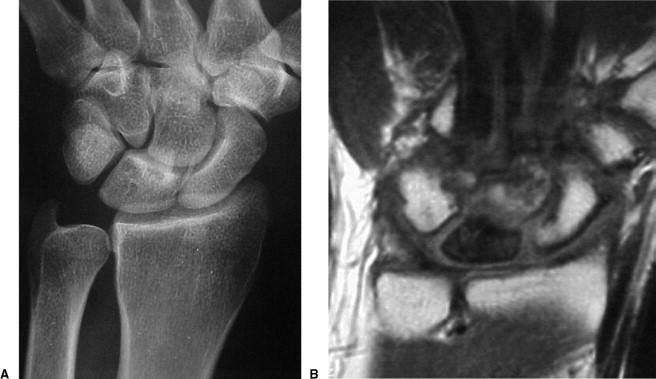 |
No visible changes on x-ray, changes seen on MRI. Immobilization and NSAIDS. |
| II |
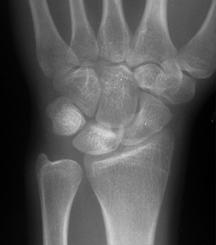 |
Sclerosis of lunate. Joint leveling procedure (ulnar negative patients). Radial wedge osteotomy or STT fusion (ulnar neutral patients). Distal radius core decompression. Revascularization procedures. |
| IIIA |
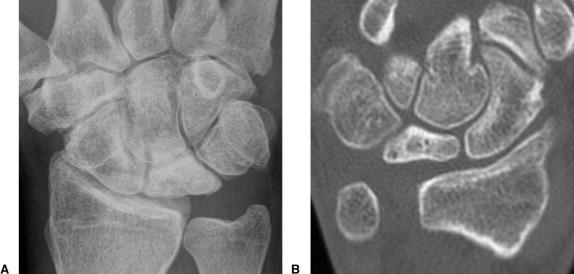 |
Lunate collapse, no scaphoid rotation. Same as Stage II with the addition of vascularized bone grafts. |
| IIIB |
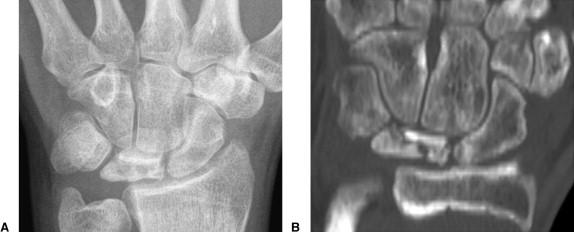 |
Lunate collapse, fixed scaphoid rotation. Proximal row carpectomy, STT fusion, or SC fusion. |
| IV |
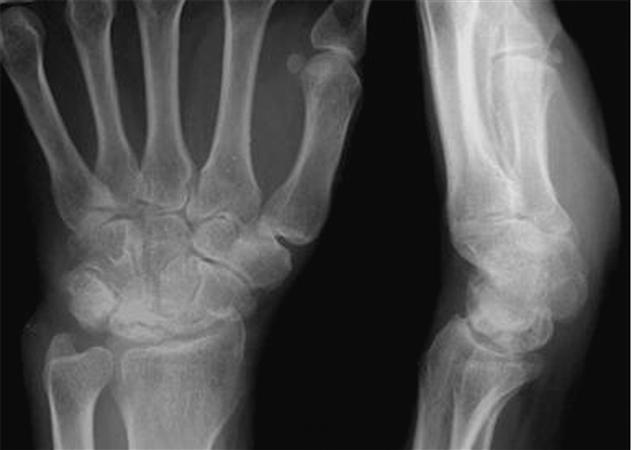 |
Degenerated adjacent intercarpal joints. Wrist fusion, proximal row carpectomy, or limited intercarpal fusion. |
Clinical Presentation
- Symptoms: dorsal wrist pain
- Physical exam: inspection and palpation
Imaging
- Wrist radiographs recommended views: AP, lateral, oblique views of wrist
- CT: most useful once lunate collapse has already occurred
- MRI: best for diagnosing early disease
Treatment
- Nonoperative treatment: observation, immobilization, NSAIDS
- Operative treatment: depends on severity and symptoms
Techniques
- Vascularized bone grafts
- Impact of surgical procedure on radiolunate contact stress
Ulnar Variance Diagram
![Ulnar variance diagram]()
Ulnar
Radius
History
Incidence
Risk Factors
Ulnar Negative Variance
Repetitive Trauma
Diagnosis
Treatment
Adolescent Patients
Radial Shortening Osteotomy
Wrist Fusion
Prognosis
Kienbock's Disease is the avascular necrosis of the lunate, leading to wrist pain and abnormal carpal motion.
Incidence is highest in males between 20-40 years old.
Risk factors include a history of trauma.
Ulnar negative variance and decreased radial inclination increase radial-lunate contact stress, leading to the disease.
Repetitive trauma and anatomic factors such as lunate geometry and vascular supply also play a role in the development of Kienbock's Disease.
Diagnosis can be made with wrist radiographs, but MRI may be needed for early disease detection.
Minimally symptomatic patients may be treated with NSAIDs and observation. Operative procedures may be considered depending on the severity of the disease and patient's symptoms.
Patients with adolescent radiographic evidence of Kienbock's and progressive wrist pain are candidates for temporary pinning.
Stage I, II, and IIIA disease with ulnar negative variance may be treated with radial shortening osteotomy or ulnar lengthening.
Wrist fusion or total wrist arthroplasty may be necessary for Stage IV disease.
If unrecognized and untreated, Kienbock's Disease can progress and become debilitating.







